Butcher Block Countertops: Everything You Need To Know
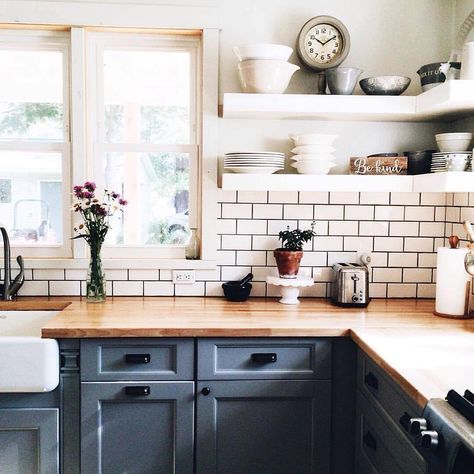
Image Source: Pinterest
What are butcher block countertops?
Butcher block countertops are solid and sturdy countertops. They are made from straight cuts of woods which are joined together. These woods are commonly glued together to form thick slabs. Butcher block countertops can give a classy and rustic look for the country or traditional kitchen. Now day’s people also use them in an apartment kitchen with contrast colors for modern appeal. These countertops can be crafted from the different type of woods. Some of the most important factors to consider are like hardness, durable, naturally anti-bacterial, & heat resistant. Well maintained butcher countertops ages with eye-catching rustic warmth.
Type of Butcher block countertops based on Grain Direction
Butcher block are of different types depending on their construction style and cutting surface. With the pictures, you can see understand the type of wood grains on the different surface of blocks.
- Edge grain: Edge grain is most preferred because of its strong, stable and less expensive construction in comparison to end grain. They are made by placing long wooden boards on sides and joined together with glue. They can be produced by joining continues length of same sized wood or with the random length of woods that are finger jointed. In this cutting area is the side part of the individual woods.
- Face grain: Face grain butcher block countertops are made by joining together side part of the wood. Cutting surface on this type is the face of the wood. They look amazing with are the pattern and grains visible on the block. On the other side, they are not good for cutting or chopping. Because of this, they are not suitable for the working area in kitchen countertops.
- End grain: End grain butcher block are the strongest and most expensive of all three. They are made by joining of small rectangular blocks of wood. In this, the end part is the cutting area of the slab. This type butcher block is mostly preferred for working area in kitchen countertops. They are strong and cut marks of knife are not easily visible on them. They are also good for knives as while cutting blade edge slide into the grain.
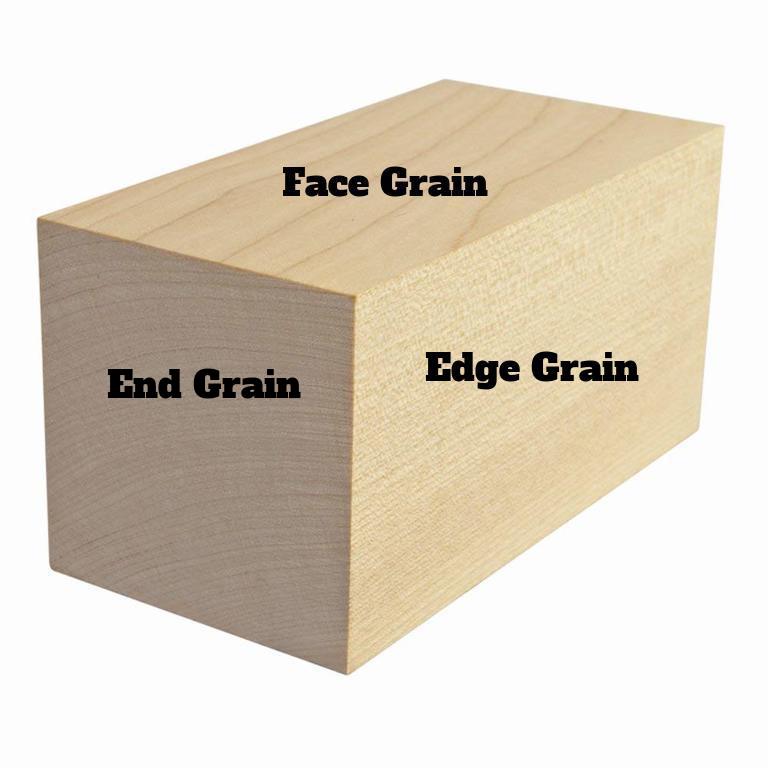
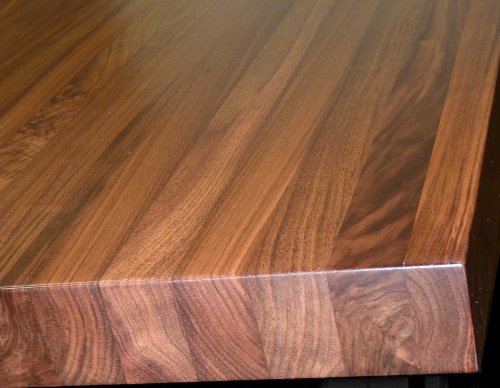
Edge grains
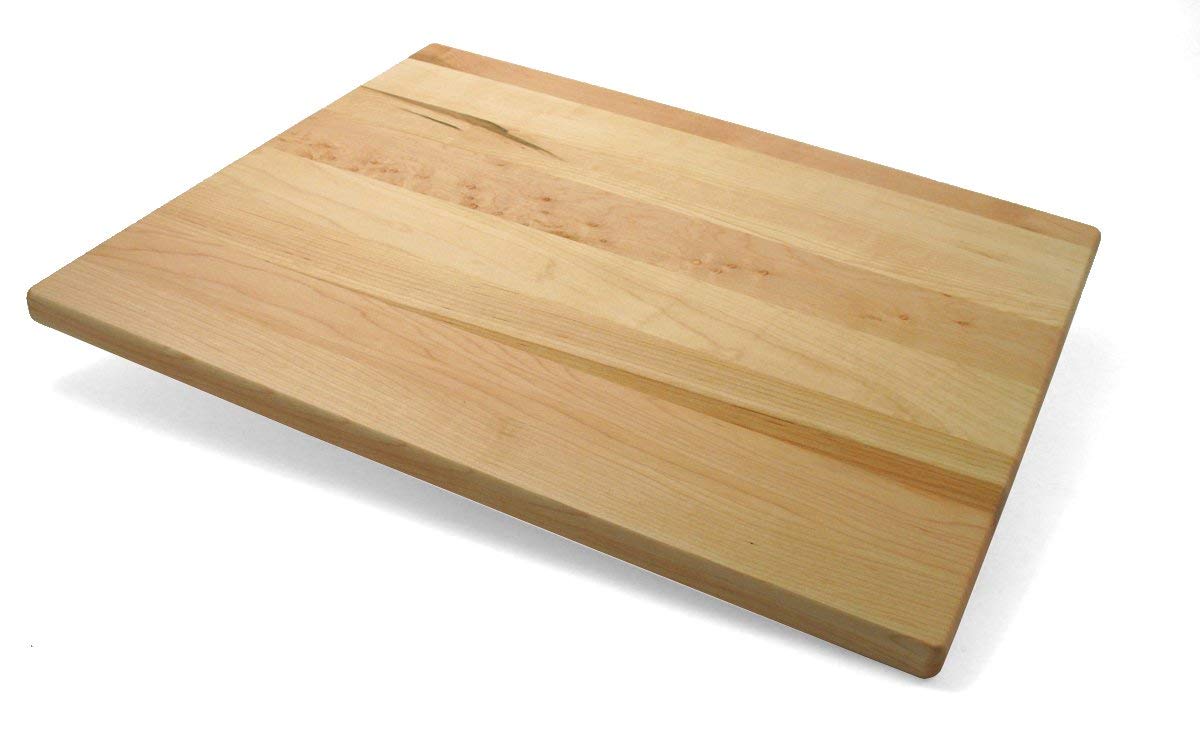
Face Grains
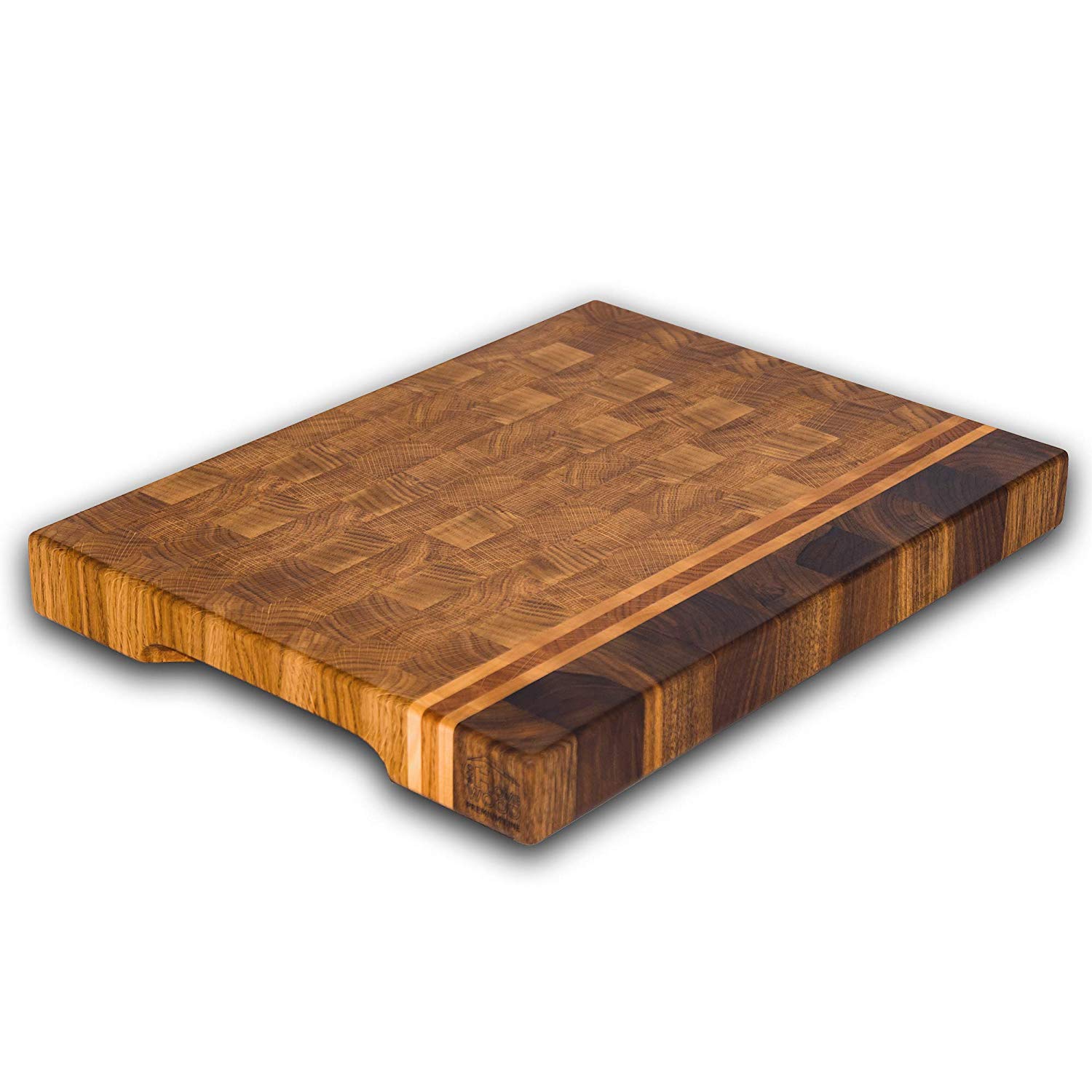
End Grains
Different Type of wood used for Butcher Block Countertops
Well constructed wooden butcher block countertops are made by hardwood. All woods have different grain patterns, color & Janka score. This helps us better to understand which wood can be better for kitchen countertops. Some of the woods used are Maple, red oak, bamboo, zebrawood & walnut.
Janka score– In this test 0.444” steel ball is embedded to wood until half of its diameter. The force required to do this is measured and gives the relative hardness of wood. The higher rating means the wood is harder in comparison to lower rating.
Some of the woods which are an excellent choice for butcher block are as follows:
- Walnut: Walnut has the amazing rich pattern & has deep texture. Their colors and grain structure gives the classy and traditional look to the kitchen. On the downside, they are not as durable as other woods. They have a Janka score of 1000.
- Maple: This wood is most preferred because they are cheap and hard. They have the uniform and clear grain. With Janka score of 1400, they are durable enough for cutting and chopping.
- Oak: Oak is also a nice option because of its rich red and white color with uniform grain patterns. They have Janka score of 1200 which make them durable and hard.
Check out this Maple wood countertop in amazon for more details.
Maintenance for Butcher Block Countertops
Butcher block countertops ages with elegance. If you maintain them properly they can go for years. They don’t require much maintenance as long as you clean and oil them regularly.
Keep the dry: The most important thing is to keep them dry. Wood can absorb water quickly and harm your countertop. That’s why it is very important to keep them dry and sealed. Try to wipe quickly if you spill any liquid over them to avoid any stains.
Click here to see more details about Microfiber cleaning cloth in Amazon.
Cleaning of butcher block countertop is kind of same as other types of countertops. If you drop or spill anything, wipe it with the paper towel or cleaning cloth. Don’t use any harsh detergents & chemicals as it will dry the wood over time. Instead, use mild soap mix with water to clean it.
Disinfect of butcher block: Cleaning and disinfecting regularly is important to have hygienic countertops. Wood is easy to sanitize as they keep away the bacteria’s naturally. But occasionally you should do the disinfecting by diluting vinegar in water. Mix water and vinegar in equal portion. Spray this mixture over surface of the countertop. Let it settle for 5-7 minutes and then wipe with a dry cloth.
Once in a month, you can do more intense disinfecting by salt and lemon. Sprinkle coarse salt over the surface of the countertop. Then cut lemon and gently rub over the countertops. This also helps in removal of any stubborn stains. At the end clean with a damp cloth.
Oiling Butcher block: It is recommended that you oil your block countertop every 6 months. It keeps the block protected from getting cracked or discolored. Depending on the usage and type of wood, it may require oiling more frequently. For oiling, you can use any mineral oil or wax specifically manufactured. Oiling help to cover the pores and bring color back to your countertops. NEVER USE vegetable oil as these can harm your countertop.
Check out Amazon link for wax which prevents bacteria growth in butcher block.
If you are using mineral oil, apply a thin layer after every 45 days for 1 year. After that, you can do this process every 6 months or whenever you countertops start looking dull.
Do butcher block countertops require sealing?
Butcher block required oiling regularly but not sealing. Sealing is the process involving chemicals and it is not friendly with food & knife. On the other hand, it is recommended to seal the countertop around the sink area. If you don’t use sealant near that area then with time your countertop can rot and discolor.
In short, always keep the area where you do cutting and chopping unsealed and oiled. And never keep your sink area unsealed. It is also important to use the cutting board as much as possible.
For cutting area use mineral oil as it is food safe and inexpensive. Mineral oil lightly penetrates the surface and locks the moisture within.
Butcher block wax is a mixture of mineral oil and wax. It is also suitable for the cutting area in the kitchen but expensive in comparison to mineral oil. On the other hand, they last much longer as wax helps in sealing oil within the wood.
Polyurethane is not recommended to use over the cutting area. You can use them near the sink area as they are great in sealing surface and resist and stains and moisture.
Check out water-based polyurethane in Amazon via this link.
Cutting on Butcher block countertops
You can definitely cut over these countertops, although I would recommend you to use the separate cutting board. With time cut marks from the knives can be visible on the surface. These marks can be sanded down and the surface can be oiled to make new & shiny again.
Putting hot pans over butcher block countertops
If you out hot pans for some time it’s unlikely to get burn marks. Their surfaces are heat resistant up to a certain degree. But it’s always better if you use some heat resistant pads before putting hot trays or pans. It will avoid any risk of unwanted accidents. But no matter how careful we are sometimes we forget and the surface can get burned. At that time you can just sand out surface and oil it. There will be no burn mark or ring after that.
Check out this silicon extra big countertop mat from this Amazon link.
Cost & Installation
Cost of butcher block countertops varies on which one you choose. For example, if you choose maple wood from your local store it will be cheaper as compared to exotic wood from an established brand. Type of wood and thickness of wood plays important role in determining the price of it. Butcher block can be expensive than mid-range granite but cheaper than high-grade natural stones. You can also check out our guide on Kitchen design and ideas.
Regarding installation, you can hire professionals to do this job. If you are comfortable with woodwork then you can also install yourself. It is easy to work with as compared to stone countertops. If you have some wood lying in your garage try making small countertop to understand better regarding DIY butcher countertop.
Butcher block countertops pros and cons
Pros:
- Visually elegant with the classic rustic look.
- Ages with warmth and natural look when taken care
- Durable, strong and biodegradable.
- Budget-friendly when compare to high-end natural stones.
- Can give a modern or classic country appearance.
- Have natural antibacterial properties.
- Easy to maintain and can last for a long time.
Cons:
- Not 100% heat and stain resistant.
- Can crack on extreme dryness and humidity.
- Required sanding and oiling every 6 months for the shiny appearance.
- It is required to seal near sink area as water can make it rot and discolored.
Conclusion
Butcher block countertops can be an excellent choice for both country and apartment kitchen. They required less maintenance as compared to other countertops. They are budget-friendly and can last for a long time. They give natural warmth appearance to the kitchen. Installation is easy and you can choose from multiple colors and design for your kitchen.
Which countertop you are using currently? What is your opinion about it? Write down in the comment section below.

